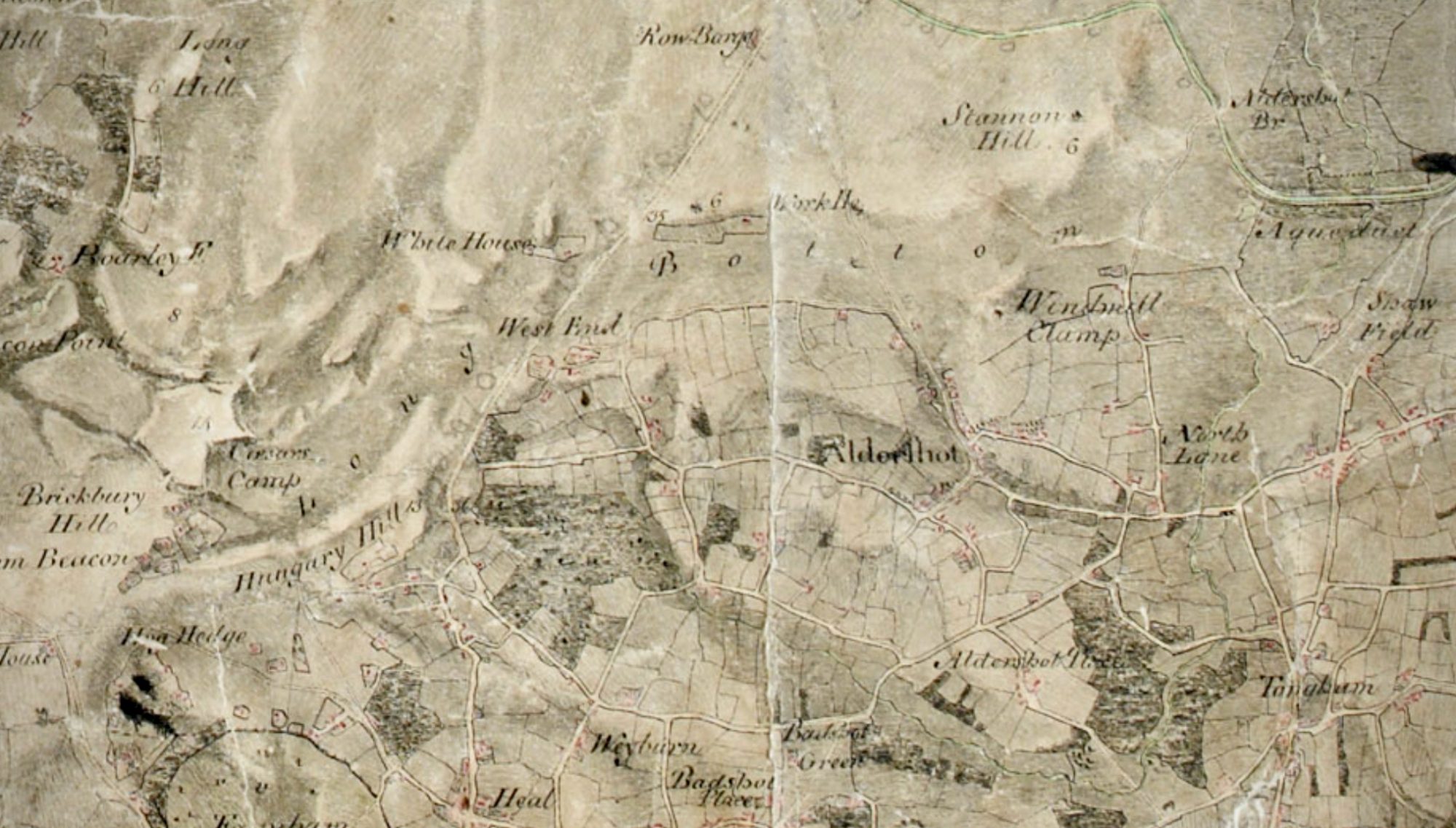Jane Young and William Chuter, both aged 22, were wed this day at the Church of St Michael the Archangel. Baptised there in 1830, William in March and Jane in July, they had known each other since childhood.
Likely both had been taught by ‘Miss Williams’, then the village school mistress. Caroline Hone, now the village blacksmith’s wife, would surely have been happy that both could sign their names in the marriage register.
‘Billy’, to give him a nickname, was the son of one of the most senior of the farm labourers in Aldershot. William Chuter Senior was also entrusted to be the official receiver for the Post Office in the village, arranging delivery and pick up from the railways station at the nearby market town of Farnham.
Seeing their son walk down the aisle on St Valentine’s Day, William and his wife Elizabeth might have recalled their own marriage at the same church nearly 33 years earlier, in March 1820.
William had also been baptised at St Michael’s Church, in 1797. The family home on Place Hill [later known as (Lower) Farnham Road] was rented from Mrs Tice.
The bride was from Aldershot’s West End. Jane had not yet reached ten years old when her father died, noted as ‘William of Farnham’ in Aldershot’s burial register in 1840. She had left her widowed mother’s household by 1851 to secure position as housemaid for a wealthy ship owner in Clapham Common.
The Chuters had long association with Aldershot. Billy was connected to many other local families through the marriage of his uncles and aunts.
More at
